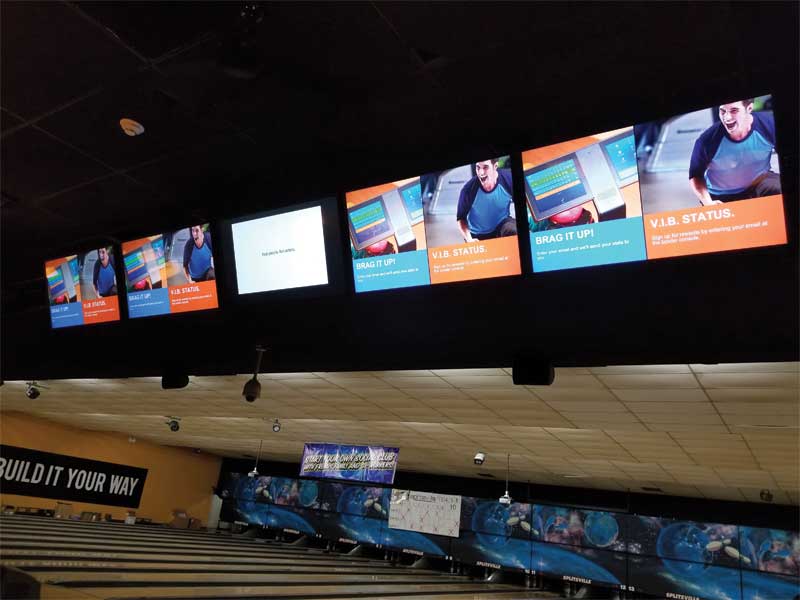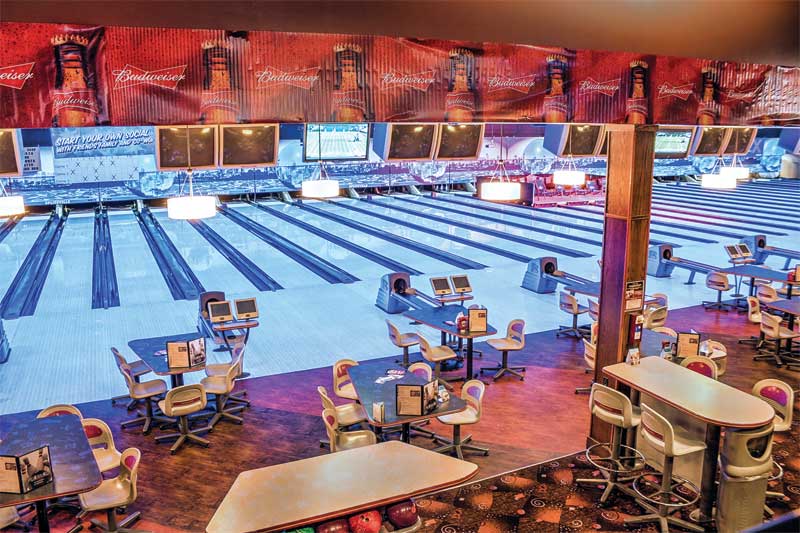By Deidre Deacon
As part of its ongoing efforts to revitalize bowling alleys as a viable business in Canada, Splitsville Entertainment has blanketed its facilities—which include locations in Hamilton, Burlington and Woodbridge, Ont., and Nanaimo, B.C.—with visual stimuli by installing digital signage, including drop-down displays, digital projectors and video walls.
The rise of digital signage
From retail stores, automotive dealerships, restaurants and entertainment venues to schools, hotels, corporate office buildings and even funeral homes, the power of digital signage to make a difference in how people experience a place has grown exponentially in recent years. Large and small businesses alike are investing in dynamic display technologies to help them increase collaboration and engagement, by enabling multiple users to create, edit, transform and highlight on-screen images and text in real time. With the right combination of hardware and software, they can market goods, generate advertising revenue, support interactivity and appeal to younger generations with experiential offerings.
There are multiple technical and economic factors driving the current wave of digital signage adoption, including higher screen resolutions, lower prices, improved integration capabilities and other advances in large-format display technology. According to PMA Research, an industry analysis firm that specializes in market data for the digital display industry, the market for interactive flat-panel displays (FPDs) grew by 60 per cent in 2016 and is expected to experience unit growth of up to 50 per cent this year. Market growth for large-format digital displays reached 23 per cent in 2016 and is forecast to remain in the double digits in 2017.

The digital signage showcases a mix of promotions, personalized celebratory notices, event reminders, music, advertising, acknowledgements and business presentations.
Beyond the economic and technical advantages of digital signage over other communications media, one driving factor for many business owners is the quest to capture the attention of so-called millennials, who will soon represent the largest consumer demographic. A 2016 retail sector study by Accenture, a global management consulting and professional services company, showed how this generation is eager to use digital forms of communications in experiential ways throughout its travels.
The digital signage industry has responded with screen technologies that fulfil this role and provide instant gratification, from self-serve menu boards at fast-food restaurants and kiosks in airports and shopping malls to wayfinding maps on large campuses andon-site ‘virtual receptionist’ touch screens to games played with video walls in entertainment centres.
From old-school to new-tech
This trend of tapping into the millennial mindset has been exactly the thinking behind Splitsville’s major digital signage deployment, as the company seeks to find new success in an ‘old-school’ business by overcoming the public’s concept of bowling alleys as mere throwbacks to the past.
“Our industry has been around for more than 150 years,” says Pat Haggerty, Splitsville’s president. “It carries with it the baggage of smelly shoes, unpleasant sounds and ugly orange shirts.”
From the 1960s through the ’80s, Haggerty explains, some 75 to 85 per cent of bowling alley revenues came from leagues, with the rest contributed by birthday parties, corporate teams and open playing. A transition in the ’80s toward in-home entertainment changed all of that.
“Once this entertainment technology came on the scene, the leagues shrank to one-tenth of their original size,” says Haggerty.






